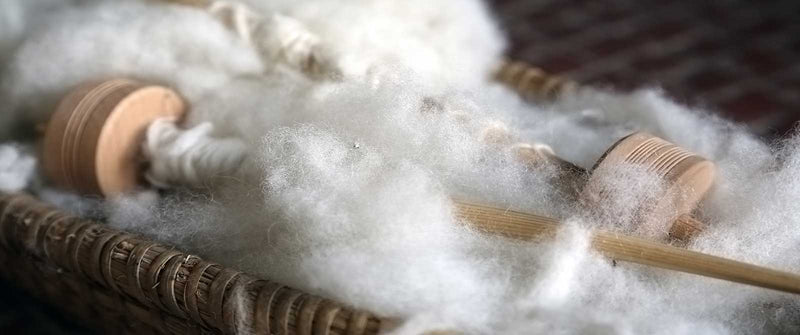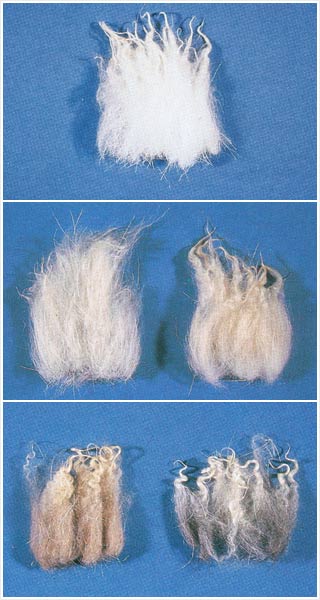Recognizing the Various Kinds Of Cashmere a Natural Fiber and Their One-of-a-kind Benefits

The Origins of Cashmere: A Historic Summary
While the elegant touch of cashmere remains to beauty modern consumers, its beginnings map back to the harsh, chilly climates of Mongolia and the Himalayas. For centuries, the aboriginal peoples of these regions have actually been elevating Capra Hircus goats, the prime source of cashmere woollen. These goats, resistant against the extreme winters, expanded a fine undercoat to make it through, which later ended up being recognized as cashmere. The name itself admires Kashmir, a region in India where the wool was originally processed. Much of the very early cashmere trade route was assisted in by the Silk Roadway, linking Asia with the Middle East and Europe. In spite of its worldwide spread, the finest cashmere is still thought to stem from the original areas of Mongolia and the Mountain Ranges.

The Production Process: From Goat to Garment
Shearing a Capra Hircus goat marks the inception of the complex cashmere manufacturing procedure. This delicate procedure commonly happens annually during springtime. The fine, soft undercoat is then divided from the coarser external hair, a procedure referred to as dehairing. The resultant raw cashmere is then washed to get rid of contaminations such as vegetable, grease, and dirt matter.
The tidy fiber is subjected to dyeing, spinning, and weaving, or knitting, to change it right into a fabric. Complex procedures such as quality assurance checks and finishing processes adhere to, ensuring completion item keeps the extravagant criterion expected of cashmere. This meticulous procedure, from goat to garment, validates the high expense connected to cashmere products, making them an icon of deluxe and improvement.
The Different Kinds of Cashmere: A Thorough Evaluation

The Distinct Advantages of Cashmere: Convenience and Sustainability
Moving from the range of cashmere types to the advantages they supply, comfort and sustainability stand out plainly. Cashmere, a natural fiber, is renowned for its exceptional gentleness, offering a level of convenience that artificial fibers why not try this out can't match.
When it concerns sustainability, cashmere is renewable and biodegradable, as it's collected from cashmere goats that regrow their coats annually. what is cashmere. Unlike artificial fibers which can take centuries to break down, cashmere's effect on the environment is marginal. This combination of convenience and sustainability makes cashmere a beneficial selection for mindful consumers

Caring for Your Cashmere: Upkeep and Preservation Tips
While cashmere is unquestionably a sustainable and extravagant choice, it calls for particular treatment to maintain its top quality and expand its lifespan. To start, cashmere need to be hand washed making use of chilly water and a mild cleaning agent. Prevent turning or wringing the garment as it can harm the fibers. Instead, carefully capture out excess water and lay it flat on a towel to completely dry. Furthermore, cashmere products should be stored in a dry and cool location, far from direct sunlight and moisture. Utilizing moth repellents can secure these garments from possible damage. It's recommended visit to stay clear of hanging cashmere to avoid extending. Instead, fold and shop them effectively to preserve their shape and top quality over time.
Buying Cashmere: Comprehending Its Worth and Well Worth
Although cashmere might originally appear like a costly investment, its long-term value and worth come to be noticeable when you consider its impressive high qualities. Known for its unequaled gentleness and warmth, cashmere is a costs all-natural fiber that outmatches various other materials. Its high need and minimal supply add to its high price, yet its sturdiness ensures it lasts for years, offering outstanding value for cash. Cashmere pieces are classic, typically ending up being heirlooms gave with generations. what is cashmere. Its all-natural shielding residential properties offer warmth without the mass of synthetic fibers. Purchasing cashmere, for that reason, is not nearly current style patterns, but regarding embracing a lasting, durable, and luxurious way of life.
Final Thought
In recap, the kind of cashmere one selects, be it Mongolian, Chinese, or Italian, is determined by private choices for heat, luxury, sustainability, and budget plan. The value of cashmere prolongs past its price, with comfort and longevity including in its worth. Correct treatment and upkeep can guarantee its preservation. Comprehending the origins, production process, and special advantages of different types of cashmere can direct consumers in their investment in this glamorous natural fiber.
Whether it's the phenomenal heat of Mongolian cashmere, the affordability of Chinese cashmere, or the eco-conscious production of Italian cashmere, there's a tale to be found behind each fiber type. Cashmere, an all-natural fiber, is renowned for its unequaled gentleness, providing a degree of comfort that artificial fibers can't match.When it comes find more information to sustainability, cashmere is renewable and eco-friendly, as it's gathered from cashmere goats that regrow their coats annually. Understood for its unrivaled soft qualities and heat, cashmere is a costs natural fiber that surpasses various other materials. Comprehending the origins, production procedure, and distinct advantages of different kinds of cashmere can direct customers in their investment in this lavish natural fiber.
Comments on “Is Cashmere a Natural Fiber? Exploring Its Pure Origins and Uses”